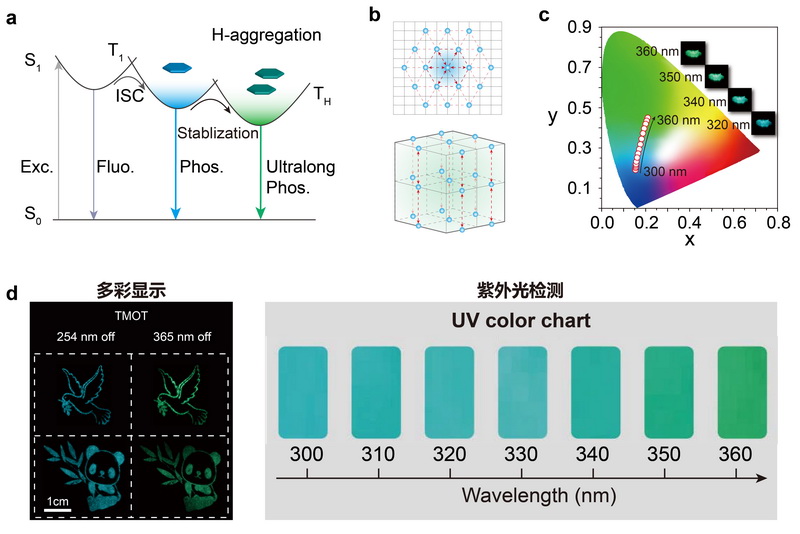Recently Dr. Huang Wei, a professor of the Institute of Advanced Materials (IAM) in our school (Nanjing University of Posts and Communications) and a researcher of the Key Laboratory for Organic Electronics and Information Display, has made a breakthrough in the field of Long Persistent Luminescence (LPL), thanks to the coordinated efforts of his team which is co-led by Professor Liu Xiaogang form the Department of Chemistry of the National University of Singapore (NUS) and Professor An Zhongfu from the Nanjing University of Technology. For the first time, they have made it possible for a single-component molecular crystal to give out colorful long afterglow, revealing the potential application of such materials in the realms of colorful display, anti-counterfeiting and visualized ultraviolet light detection. Relevant results, entitled as “Colour-tunable ultra-long organic phosphorescence of a single-component molecular crystal”, are published online in the world-class academic journal Nature Photonics on April 8, 2019.
How to enable colorful long afterglow luminescence in a single material structure has long baffled experts in the field. Faced with this scientific challenge, the IAM team of our school under the leadership with Academician Huang Wei cooperated with the research group of Professor Liu Xiaogang from the NUS, exploiting nanomaterials such as quantum dots and carbon dots so as to bring to life colorful illumination design. Through the ingenious design of molecular structure and crystal packing in single-component molecular crystal, they successfully enabled the long-lasting luminescence in both molecular and aggregate states and developed a series of dynamic colorful luminescent materials with long afterglow that is susceptible to excitation wavelength. In the crystal state, as the excitation wavelength gradually shifts from 250 to 400 nm, the organic long afterglow changes it color from purple to green accordingly, manifesting the feature of excitation wavelength dependence. The long afterglow span of this type of material is 2.45 seconds, and the maximum luminous efficiency is 31.2%. In view of this property, this material first finds its way to the colorful display and visualized ultraviolet light detection. To consider the bigger picture, this innovative research sheds lights on the development of more intelligent new materials and applications in the fields of organic optoelectronics and flexible electronics.
Web link:https://www.nature.com/articles/s41566-019-0408-4




